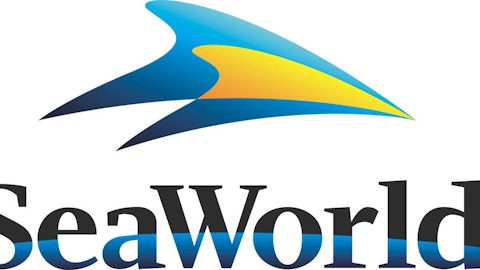
At a price of $33.5 a share, the company trades on a ttm P/E of 36 and a price to book ratio of 5.5, even though the company has made a loss in two out of the last four years and has been cash flow positive in only one.
As a value investor, these numbers certainly do not look appealing. Furthermore, the company has some questionable key ratios:
Values taken from the company’s S-1 filed April 11
| Metric | Value |
|---|---|
| Current Assets | $152 |
| Current Liabilities | $246 |
| Current Ratio | 0.6 |
Figures in millions of $US
With a current ratio of less than one, the company has extremely poor liquidity and lacks the ability to cover all of its bills falling due within twelve months. Usually, this would not be an issue, as it would be easy for the company to increase its short-term borrowing to pay for any sudden liabilities called in, however, the company already has questionable levels of debt.
| Metric | Value |
|---|---|
| Net Debt | $1,800 |
| Net Debt to EBITDA | 3.5x |
| Net Debt to Equity | 4.1x |
Figures in millions of $US
And interest costs already account for 50% of operating income:
| Metric | Value |
|---|---|
| Interest Expense | $111 |
| Operating Income | $227 |
| Interest Cover | 2.04x |
Figures in millions of $US
With a net debt to equity ratio of 4.1x and interest coverage of only 2x, the company does not have much room to move financially. Indeed, even a small reduction in net income could significantly affect the company’s ability to service its debt, and if the company increased its debt to cover current liabilities, the higher interest payments would put the company’s income under further pressure.
It appears that SeaWorld Entertainment Inc (NYSE:SEAS) could quickly slip into trouble if its income starts to come under pressure.
Having said that, are these levels of debt and low current ratios universal across the industry? How does SeaWorld Entertainment Inc (NYSE:SEAS) compare to its competitors?
The competition
The company’s closest competitors/peers would be Six Flags Entertainment Corp (NYSE:SIX) and Cedar Fair, L.P. (NYSE:FUN) (Disney is also fairly active in the sector but is much more diversified and has global exposure – not really a suitable comparison.)
| Company | Market Cap. | P/E ttm | P/B | Current Ratio | Debt to Equity | Interest Cover | Liabilities and Shareholder Equity |
|---|---|---|---|---|---|---|---|
| Six Flags | $3.5B | 11.7 | 4.3 | 4.2 | 1.57 | 5.4 | $3.06B |
| Cedar Fair | $2.3B | 16.3 | 14.6 | 1 | 9.6 | 2.3 | $2.03B |
| SeaWorld | $3.1B | 36 | 5.5 | 0.6 | 4.1 | 2.0 | $2.55B |
| Average | 21.3 | 8 | 1.9 | 5.1 | 3.2 | $2.55B |
The largest and financially strongest company in this group is Six Flags Entertainment Corp (NYSE:SIX). Comparing Six Flags Entertainment Corp (NYSE:SIX) and SeaWorld really flags up SeaWorld’s weaknesses.
Six Flags Entertainment Corp (NYSE:SIX) has the lowest level of debt in the group, and current liabilities are covered more than four times by current assets. In addition, the company’s interest payments are covered five-and-a-half times by net income, and it is only trading on a ttm P/E of 11.7, below the group average of 21.3.
That said, SeaWorld’s other competitor, Cedar Fair, L.P. (NYSE:FUN) has a balance sheet that is in the same state as SeaWorld’s. With a debt to equity level of 9.6x and a current ratio of one, the company is lacking room for any financial shocks or a fall in income. Still, the company’s valuation is nowhere as near as inflated as that of SeaWorld Entertainment Inc (NYSE:SEAS) – although the company is trading at a P/B ratio of 14.6, but I assume that the company’s high level of debt is mitigating the majority of its assets.
So overall
Overall, SeaWorld Entertainment Inc (NYSE:SEAS)’s hotly anticipated IPO may not be all that it’s stacked up to be. With high levels of debt, a low level of interest cover, and serious lack of short-term financial liquidity, the company looks to be financially unsound, even in comparison to its closest peers in the sector.
With a ttm P/E of 36, a P/B ratio of 5.5, and around 50% of the company’s net income being spent on interest payments, SeaWorld Entertainment Inc (NYSE:SEAS)’s investors should be wary as a slight fall in park attendance or correction in the market could quickly send the company’s share price lower.
The article Don’t Jump on the SeaWorld Ride Just Yet originally appeared on Fool.com and is written by Rupert Hargreaves.
Copyright © 1995 – 2013 The Motley Fool, LLC. All rights reserved. The Motley Fool has a disclosure policy.



